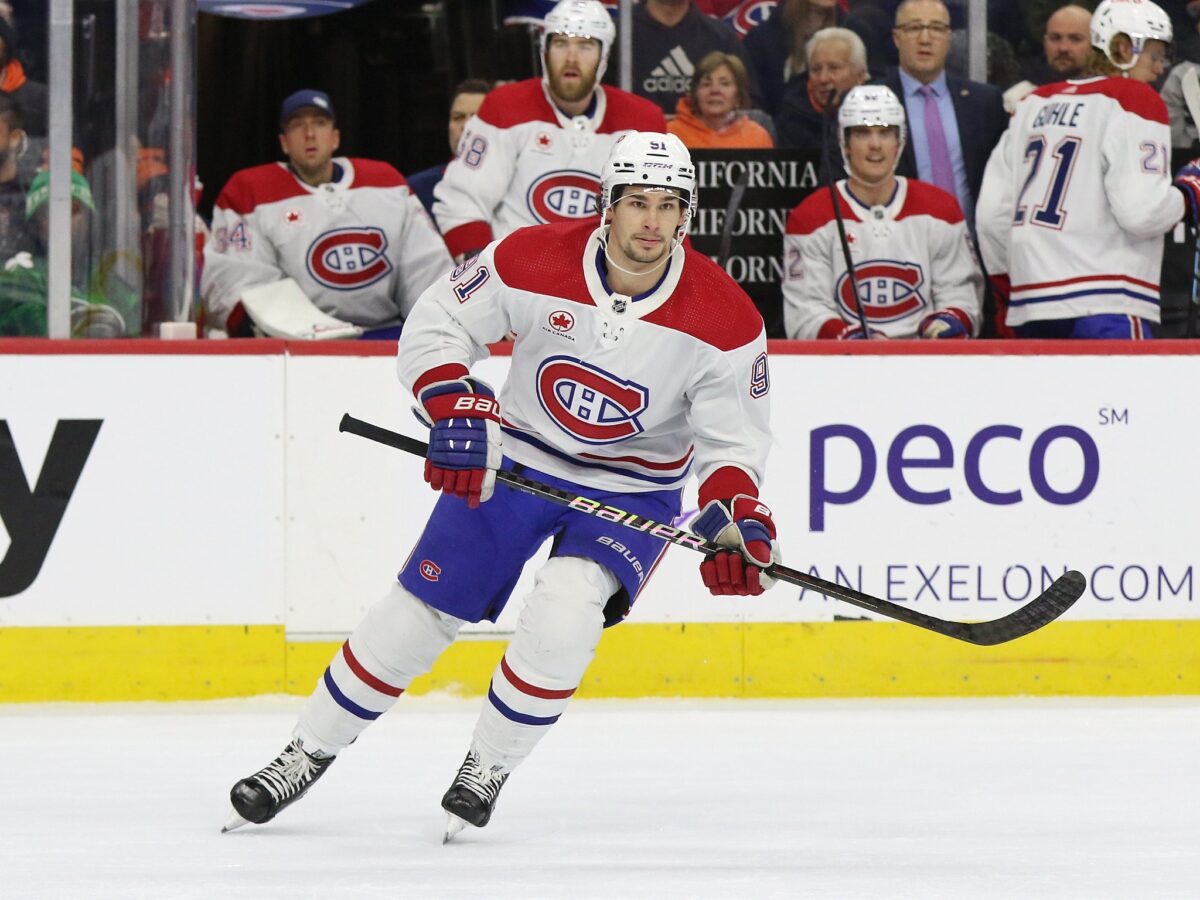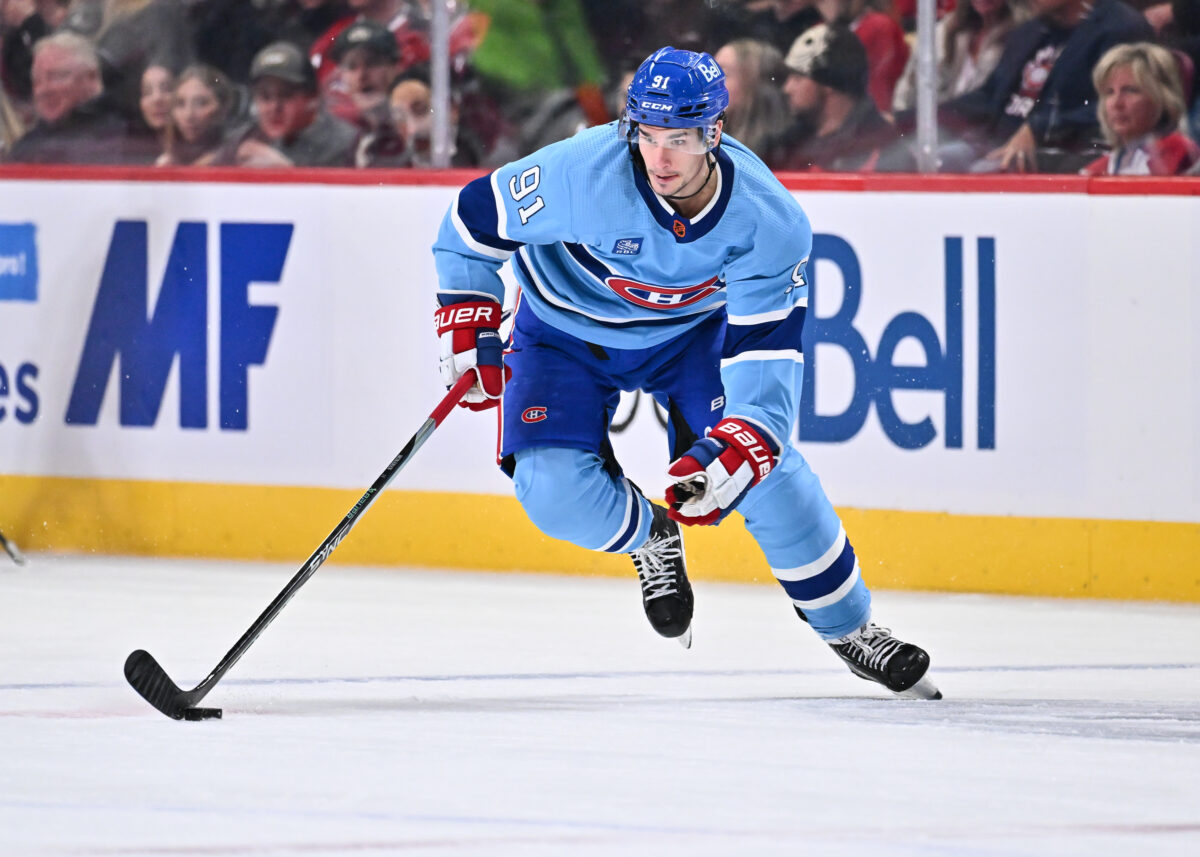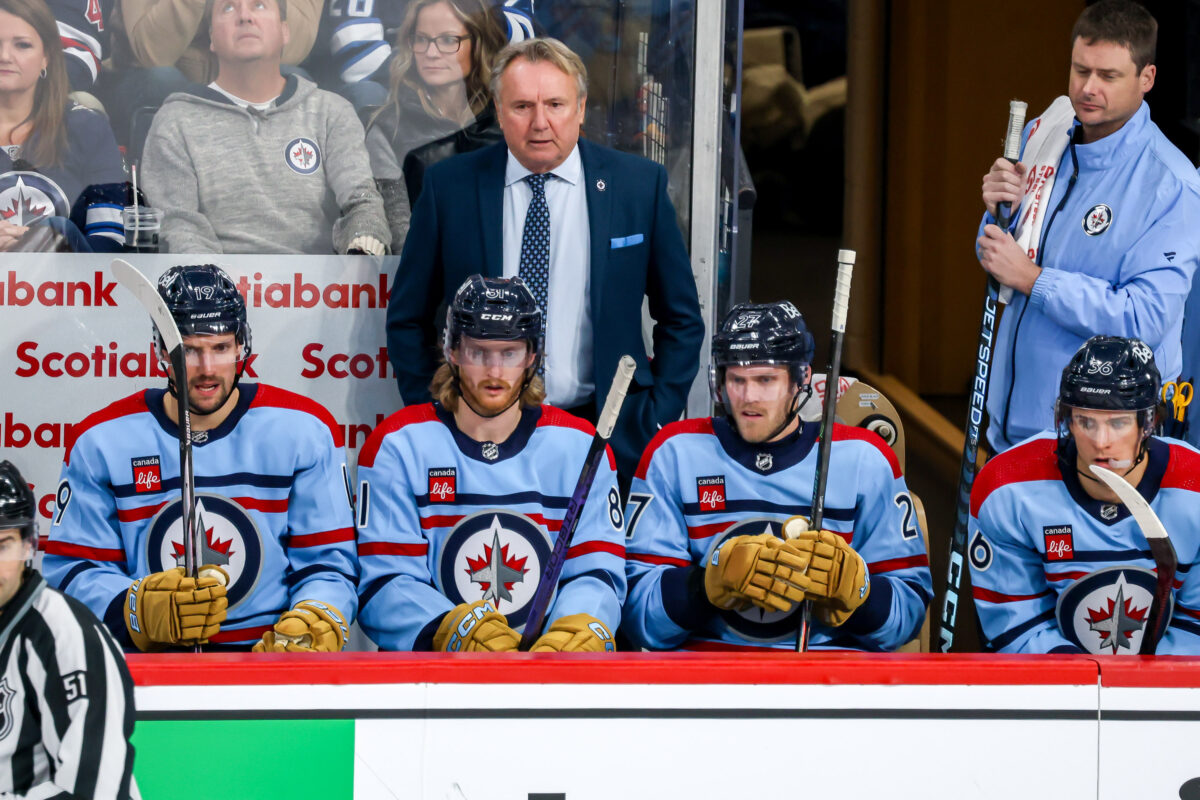It was announced on Feb. 2. that the Winnipeg Jets acquired Sean Monahan from the Montreal Canadians in exchange for a 2024 first-round pick and a conditional 2027 third-round pick. Monahan was a player many had on their radar as a target for the Jets to help solidify their center depth.
The center market has clearly accelerated after the Vancouver Canucks traded for Elias Lindholm on Jan. 31, and without waiting too long, Jets’ General Manager Kevin Cheveldayoff addressed a need before other teams could snag him. It was a steep cost for a player like Monahan, but it appears as if the Jets are serious about improving the team after sending out a first-round pick.
The Pros
Addressing a Need
Over the past several weeks, the consensus of what the Jets need to take that “next step” has become clear, and that was a second-line center. There remain some needs to be addressed, but this was the move that clearly was meant to bolster the group.

When Mark Scheifele went down with a lower-body injury, the scoring tanked for the Jets. The injury insurance of the forward group was tested, and it was clear that they were unable to keep up offensively with such a loss.
Related: 3 Takeaways from Winnipeg Jets’ Sean Monahan Trade
Adam Lowry and Vlad Namestnikov were the default choices for the coaching staff to replace that loss down the middle, but there was a clear need for someone else with a nose for offense, so this addresses that depth issue. Whether Monahan is someone who can fill the offensive need remains to be seen, but the move signals the desire to future-proof things a bit.
Potential Minute Increases for Ehlers, Perfetti
Perhaps the biggest win out of this deal is that we could see minute increases for both Nikolaj Ehlers and Cole Perfetti. Normally listed as the “second line,” that descriptor is in name only as they tend to average the third-highest minutes among forward lines behind the Scheifele line and the Lowry line.
With Monahan being brought in and Bowness confirming that he’ll start with Ehlers and Perfetti, perhaps this is the moment for that line to finally get that boost they’ve been earning. This isn’t a knock on Namestnikov, who has centered that line for most of the season, but Monahan does carry more firepower and the potential to make more of a difference offensively.

Another aspect of this is the trust of the coaching staff, especially when it comes to starting plays in the offensive zone. An aspect of the lack of ice time has been attributed to their on-the-fly changes because the staff will choose to start one of the other three lines because they’re more trusted in the faceoff dot. Namestnikov has been in the mid-30 % range all season, while Monahan is sitting at 55%. Could that be the difference maker on who takes the ice in big moments?
The Cons
The Cost
With all trades, talk of cost and valuation can be a polarizing subject. The Monahan deal is no exception, and whenever a first-round pick is involved, it’s clear that there’s going to be some disagreement on the cost of acquisition.
It’s clear the market has dictated that center upgrades are going to come at a premium, and without hesitation, the Jets paid the necessary return to address a need. What’s important here is that two things can be true at the same time: Monahan fits that second-line center need, and a first-round pick is objectively an overpay.
Monahan is having his best season since 2019-20 when he put up 48 points in 70 games for the Calgary Flames, which is a risk to take if you’re the Jets looking to upgrade. They bought high, and are undoubtedly in a “wait and see” mode as they evaluate his impact on the team. This deal in a vacuum is a lot to stomach, but the NHL doesn’t take place in a vacuum but in an environment where moves like this can be valuable.
Now, the argument can be made that the first-round pick carries less value as this is the Jets’ attempt at making a run and that pick won’t be until the back end of the selections in a draft that carries some potential value in the 25-30 range. That said, it’s still a premium to pay for someone who carries a few unknowns as he makes his way to Winnipeg.
How Does He Fit?
With this season being somewhat of a high point in the past several years for Monahan, there remain question marks about his game, even if he is slated to slot into the top six immediately. Notably, his defensive game often gives a lot back and has been a struggle over the past several seasons.
With the Jets being arguably the best defensive team in the entire league under Rick Bowness’s systems, how does that affect Monahan’s game? Does it give him that extra support where his defensive metrics improve after a fairly chaotic system in Montreal, or does he struggle to integrate into that system?

There’s really no way to know until Monahan establishes himself in the lineup, but it’s a component of his game that can’t be overlooked. The unfortunate nature of this deal is that the two teams couldn’t be more different, meaning there’s no way to truly forecast the impact Monahan will have until he plays a chunk of games.
If you wanted to flip this narrative, you could also argue that the Canadiens being a struggling team implies that Monahan can only improve regardless of the system. His linemates are going to be better, so maybe that pressure comes off of him. Regardless, this is an exciting discussion to have, but it’s going to be somewhat of an unknown until the sample size grows.
The Verdict
This deal has the potential to wind up as a solid pre-deadline move that makes a legitimate impact down the stretch. One of the biggest bonuses of this trade is when it happened, as it gives Monahan an additional 35 games with the Jets to integrate into the system and culture of the team.
It could be even better if he gels with Ehlers and Perfetti, raising their ice time and creating a genuine second line that matches the top unit’s offensive firepower. Combine that with Monahan’s power-play impact he had in Montreal, and maybe it helps the Jets work their way out of that season-long power-play slump.
The Monahan acquisition also leaves room for the Jets to add for other needs, either in the forward group or on the back end. There are a few defenders reportedly on the market who would fit the need for the Jets, and with the room they still have, it is a legitimate possibility.
Overall, this is far from a bad deal. The steep cost was steep, but the most important thing about this trade is that the Jets went out, were proactive, and addressed their most glaring need. It’s a vote of confidence by the front office, and it’ll be interesting to see where this goes.
